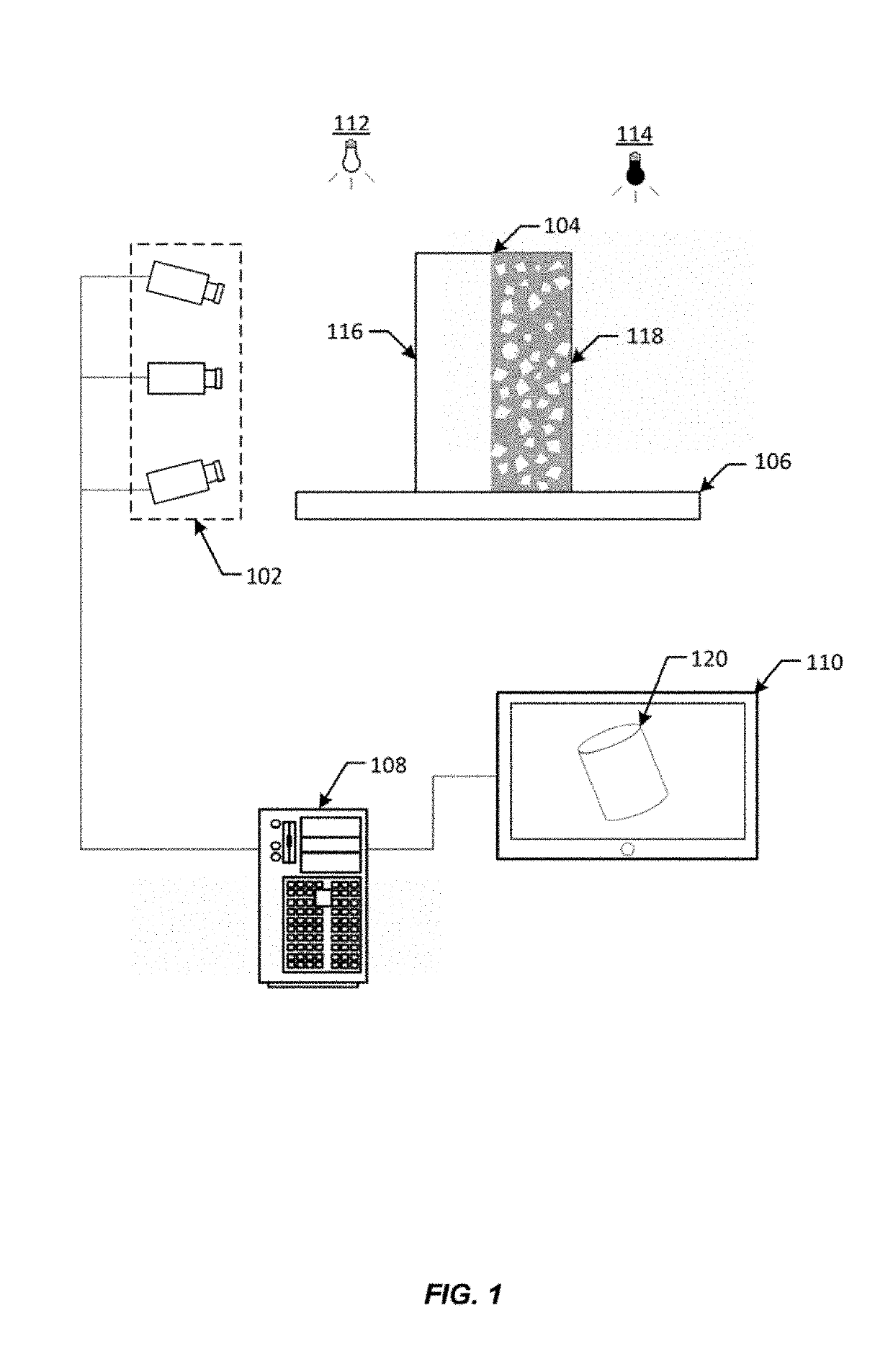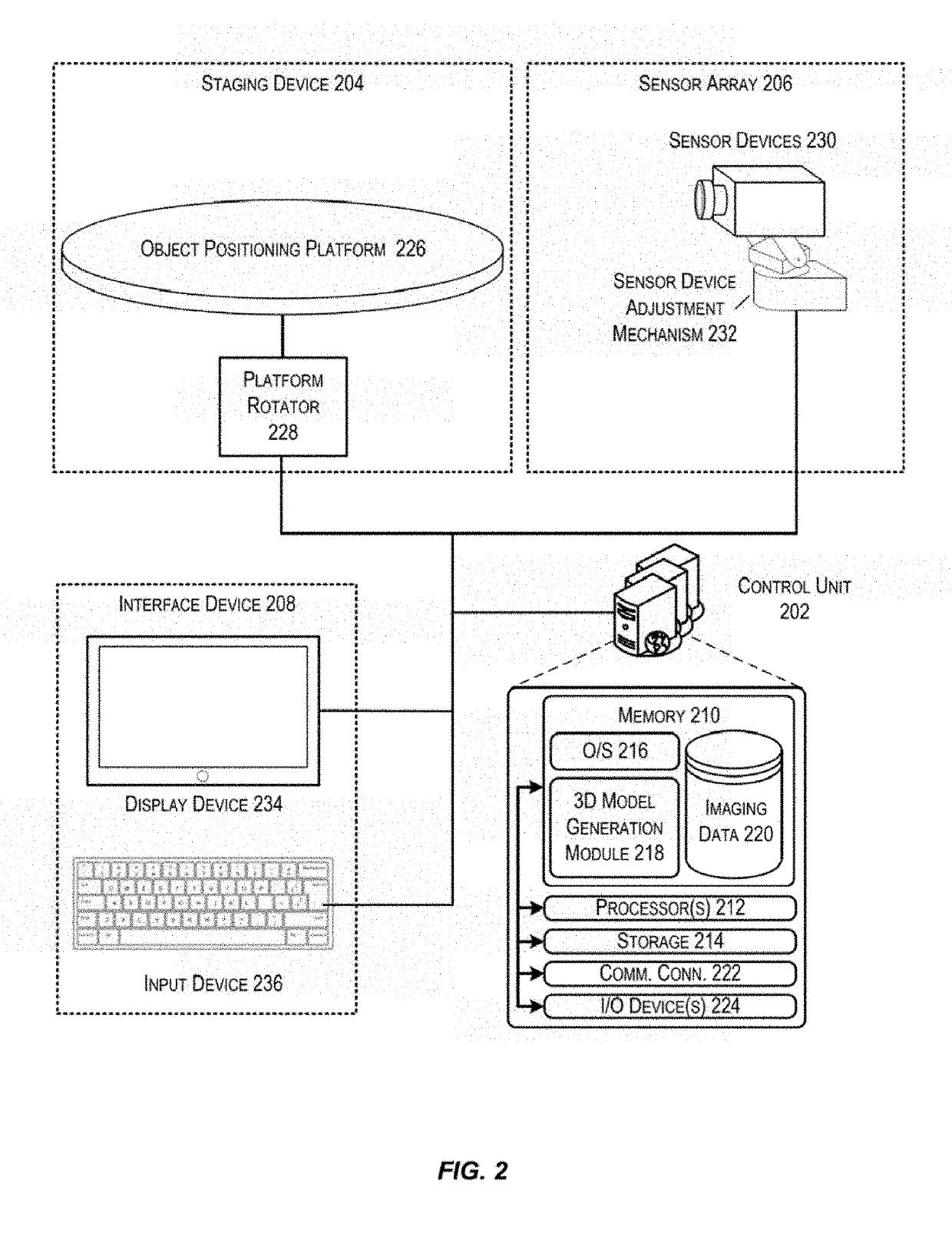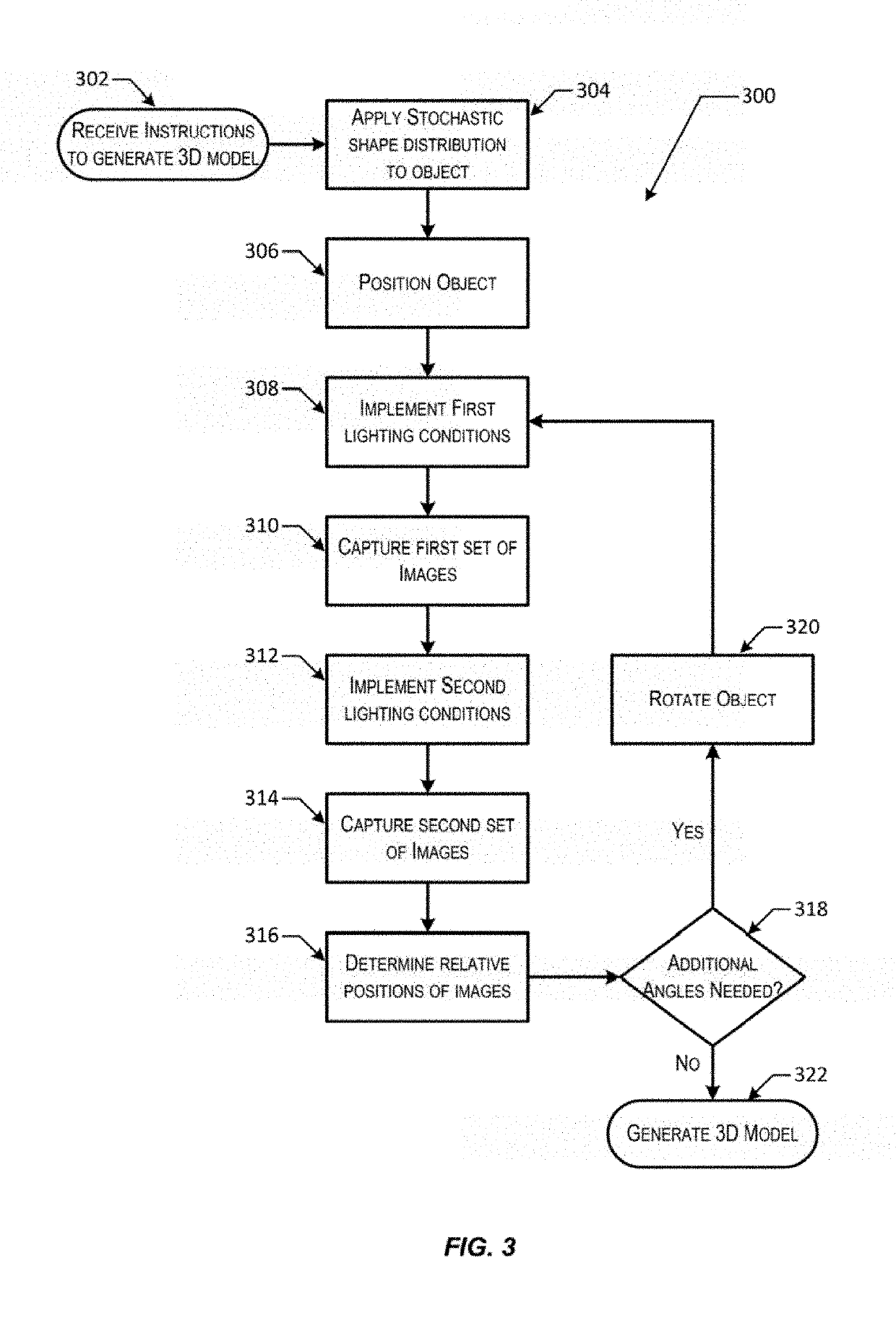Generation of 3D models using stochastic shape distribution
a technology of shape distribution and 3d model, applied in the field of 3d model generation using stochastic shape distribution, can solve the problems of inefficiency in mapping images from a matrix of images into a single 3d model, image's relative position to other images in the array of images may be difficult to determine, and the accuracy of techniques
- Summary
- Abstract
- Description
- Claims
- Application Information
AI Technical Summary
Benefits of technology
Problems solved by technology
Method used
Image
Examples
Embodiment Construction
[0021]In the following description, various embodiments will be described. For purposes of explanation, specific configurations and details are set forth in order to provide a thorough understanding of the embodiments. However, it will also be apparent to one skilled in the art that the embodiments may be practiced without the specific details. Furthermore, well-known features may be omitted or simplified in order not to obscure the embodiment being described.
[0022]Techniques described herein are directed to a system in which multiple lighting modes are used in conjunction with invisible ink in order to generate a 3D model of an object. In particular, the system uses an array of cameras, different lighting modes, and a stochastic distribution of invisible ink applied upon an object for which the 3D model is to be generated. The stochastic shape distribution may be used by the system to map relationships between various images captured using the array of cameras as well as to determi...
PUM
 Login to View More
Login to View More Abstract
Description
Claims
Application Information
 Login to View More
Login to View More - R&D
- Intellectual Property
- Life Sciences
- Materials
- Tech Scout
- Unparalleled Data Quality
- Higher Quality Content
- 60% Fewer Hallucinations
Browse by: Latest US Patents, China's latest patents, Technical Efficacy Thesaurus, Application Domain, Technology Topic, Popular Technical Reports.
© 2025 PatSnap. All rights reserved.Legal|Privacy policy|Modern Slavery Act Transparency Statement|Sitemap|About US| Contact US: help@patsnap.com



